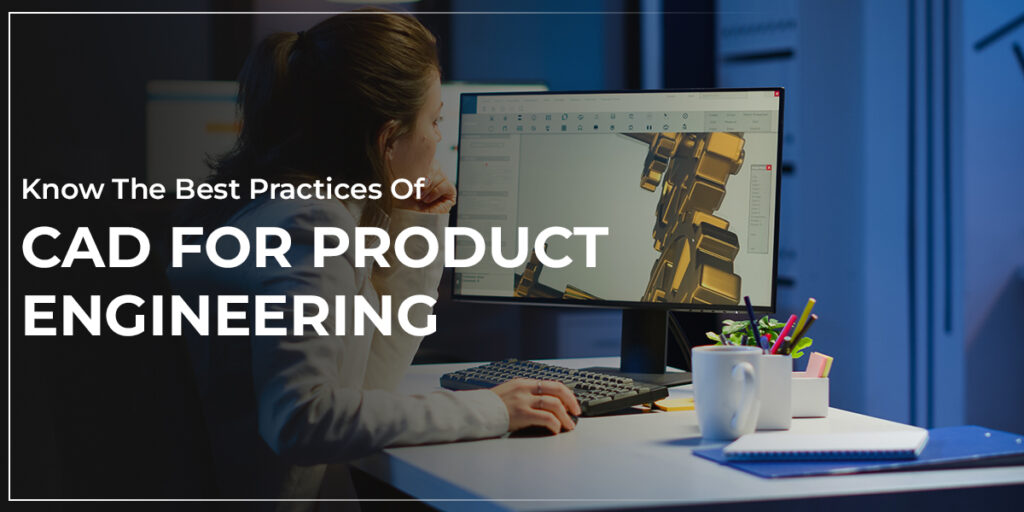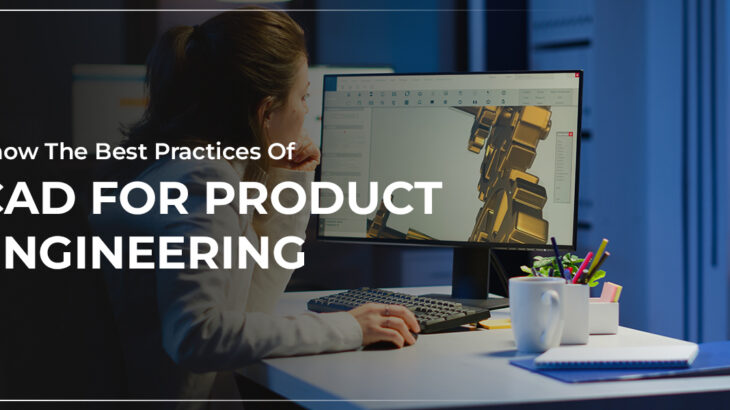
CAD, or Computer-Aided Design, is one of the greatest revolutions in the product engineering industry and we can see a lot of CAD drafting services these days enabling engineers and designers to develop and create numerous product designs with great accuracy, efficiency, and innovation. Hence, it becomes crucial in product engineering to incorporate the industry’s best practices during the workflow to harness the full potential of CAD technology. Therefore, this blog explores the best practices of CAD for product engineering to enhance your skill and potential for an optimized process in product engineering.
Define Clear Project Goals:
The foremost step to knowing the best practices of CAD in product engineering is to set a specific goal for the given project with detailed specifications. Hence, it becomes essential to understand the client’s needs, project scope, and constraints. It sets a robust foundation in the process, allowing the engineer to set efficient and focused goals for an efficient CAD design.
Choose The Right CAD Software:
Another essential step in the CAD design process is to choose the appropriate CAD technology or software for the design process. To choose the right software for your design process, you need to analyze the design complexity, your team’s efficiency, and the requirements that need to be met for challenges and the team’s efficient work. Some CAD technologies that can be used for the design process are Solidworks, AutoCAD, and many other versatile tools per industry needs.
Master The Basics:
A strong foundation in basic CAD skills is paramount. Invest time in mastering fundamental tools and commands. Hence, the engineer or designer must be proficient in 3D modeling, drawing, and dimensions for detailed and precise CAD designs.
Utilize Parametric Design:
Embrace parametric design principles, allowing you to create flexible and adaptable models. Parametric design enables easy modifications by linking parameters, ensuring that changes automatically propagate throughout the entire model. This feature is invaluable for iterative design processes.
Establish A Consistent Naming Convention:
Implement a standardized naming convention for files, layers, and components. It promotes organization and ensures that team members can quickly locate and understand the various elements within the CAD project. Consistency in naming conventions streamlines collaboration and reduces errors.
Collaboration & Team Integration:
As mentioned, it is essential not only to choose the right CAD technology that helps the team to overcome the design complexities but also to allow them to work simultaneously. CAD technologies that are cloud-based solutions are ideal for team members to work on the same project simultaneously, fostering effective workflow and real-time conversation.
Document Designs Effectively:
Thorough documentation is crucial for successful product engineering. Include comprehensive annotations, notes, and dimensions in your designs. It enhances clarity for team members and ensures that manufacturing and assembly processes proceed smoothly.
Optimize Models For Performance:
As your CAD models become more complex, optimizing them for performance becomes essential. Employ techniques such as simplifying geometry, utilizing lightweight components, and strategically using levels of detail to maintain a responsive and efficient design environment.
Mastering CAD for product engineering involves combining technical skills, effective collaboration, and adherence to best practices. By following these guidelines, you can optimize your CAD workflows, enhance the quality of your designs, and contribute to the overall success of your product engineering endeavors. Also, embrace the power of CAD with Sunstream for the best CAD drawing services to stay innovative, and forefront of the ever-evolving field of product engineering.




 +1.585.935.7123
+1.585.935.7123 +91-804-148-6861
+91-804-148-6861